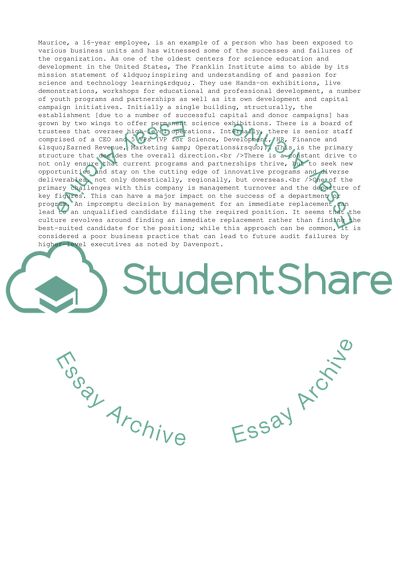Cite this document
(Knowledge Management: The Franklin Institute Science Museum Assignment Example | Topics and Well Written Essays - 1500 words, n.d.)
Knowledge Management: The Franklin Institute Science Museum Assignment Example | Topics and Well Written Essays - 1500 words. https://studentshare.org/management/1860731-team-project-knowledge-management
Knowledge Management: The Franklin Institute Science Museum Assignment Example | Topics and Well Written Essays - 1500 words. https://studentshare.org/management/1860731-team-project-knowledge-management
(Knowledge Management: The Franklin Institute Science Museum Assignment Example | Topics and Well Written Essays - 1500 Words)
Knowledge Management: The Franklin Institute Science Museum Assignment Example | Topics and Well Written Essays - 1500 Words. https://studentshare.org/management/1860731-team-project-knowledge-management.
Knowledge Management: The Franklin Institute Science Museum Assignment Example | Topics and Well Written Essays - 1500 Words. https://studentshare.org/management/1860731-team-project-knowledge-management.
“Knowledge Management: The Franklin Institute Science Museum Assignment Example | Topics and Well Written Essays - 1500 Words”. https://studentshare.org/management/1860731-team-project-knowledge-management.


